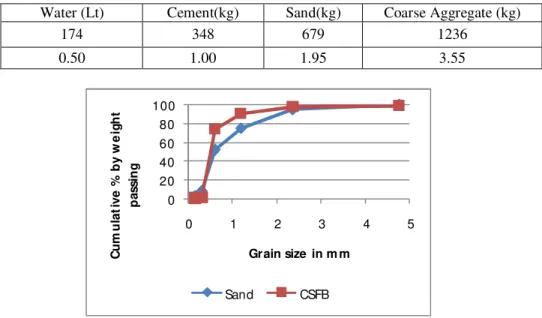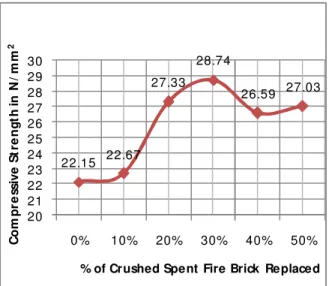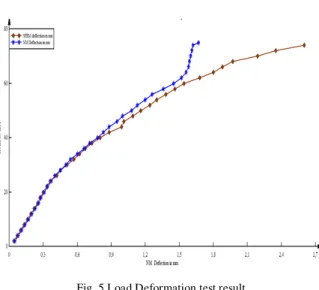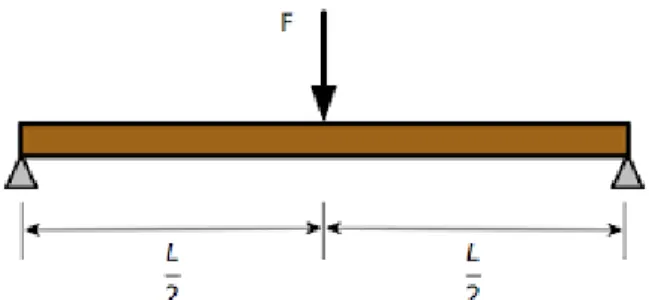517
Volume 7 Issue 4 December 2016 ISSN: 2319 - 1058
An Investigation on Flexural Behaviour of
Concrete with Fine Aggregate Partially
Replaced with Grog
Veerni Lakshmi
Associate Professor, Department of Civil Engineering, JNTU Kakinada
Abstract:- One of the major challenges of our present society is the protection of environment. Some of the important elements in this respect are the reduction of the consumption of energy and natural raw materials and consumption of waste materials. It conserves natural resources and reduces the space required for the landfill disposal.
The reduction in the sources of natural sand and the requirement for reduction in the cost of concrete production has resulted in the increased need to identify substitute material to constituent materials as aggregates in the production of concretes. Several types of waste materials have been investigated for this purpose both in developing and developed countries and the outcome of success has been varying. The materials usually researched for this purpose are either by-product materials or even sometimes manufactured aggregates. The advantages of utilization of byby-products or aggregates obtained as waste materials are pronounced in the aspects of reduction in environmental load and waste management cost, reduction concrete production cost and enhancement in some properties of concrete.
In order to solve this problem, reliable source and continuous supply of alternative material for these ingredients should be thought of and their use should be recommended. It is essential that this recommended alternative material should be eco-friendly and they should be available at cheaper cost without an interrupted supply on to the construction industry. Key Words: Grog, Flexural Strength
I. CRUSHED SPENT FIRE BRICK (GROG)
Fire brick is the product made of highly purified clays generally fired at 1300 - 1400 0 C used as one of the construction materials for metallurgical based industries such as manufacturing and processing of Iron and steel, Alloy castings etc. Ex. Rastreeya Ispath Nigam Limited, Visakhapanam. There are number of such industries processing steel and allied products in India. The quantum of Fire bricks usage per annum is very high and depends on capacity of the industry.
Usually the Fire bricks are used for inner lining of kiln meant for firing. Due to continuous exposure to high degrees of temperature about 1,800 to2,100ºC for a period of 10 to 15 days, fire bricks lose some of the physical and mechanical properties and need to be replaced by fresh fire bricks. The usage and replacement of fire bricks is periodical in nature in metallurgical based industries. The fire bricks disposed off after use are called as Spent Fire Bricks.
The Spent Fire Brick being an industrial solid waste to be disposed off properly without causing environmental problems in the vicinity of dump. Usually the waste materials are disposed by land filling. In the similar manner the spent fire bricks are also used as land filling material.
The fire bricks so generated as waste are physically cleaned and mechanically crushed to grade conforming to fine aggregates. The fineness modulus of crushed spent fire brick powder is nearly equal to river sand used in concrete. As such, the crushed spent fire brick can be used in place of river sand partially in making the concrete.
518
Volume 7 Issue 4 December 2016 ISSN: 2319 - 1058
II. OBJECTIVE OF PRESENT WORK
The objective of present work is to study the behavior of concrete where sand is partially replaced with crushed spent fire brick in flexure.
At the outset the study was made for optimized value of replacement and standard cubes, cylinders and prisms are to be cast for studying the compressive strength, split tensile strength and flexural strength for the optimized results.
Based on these values arrived at beams of size110 x 210 x 1600 mm with Area of Steel of 0.97 percent were prepared. It was proposed to study the behavior of concrete with and without replacement under flexure till failure
The physio-chemical properties of sand and crushed spent fire brick
To verify the suitability of crushed spent fire brick as partial replacement to sand, the following material properties were compared.
Table.1 Physio-Chemical Properties of Sand and Crushed spent fire brick
S.No Properties of Material Sand crushed spent
fire brick
1 Specific Gravity 2.53 2.53
2 Fineness Modulus 2.36 2.65
3 Bulk Modulus in loose state 1548 1437
4 Bulk Modulus in compact state 1696 1696
5 pH value 7.2 8.01
6 Percentage of Silica 90-95% 37%
7 Percentage of Alumina 0.005-0.01% 50%
8 Water absorption 0.94% 1.50%
9 Stability and Reactivity No No
1. Both sand and crushed spent fire brick aggregate have almost the same specific gravity, fineness modulus, bulk density (at both the states), porosity and pH value.
2. Whereas % of Silica, % of Alumina, % of water absorption were found to be different.
3. The crushed spent fire brick was made of very fine clay material, exposed to very high temperature during manufacturing process as such it may not as inert as sand, but does not affect the quality of concrete when used as an ingredient.
4. The suitability of crushed spent fire brick aggregate as an ingredient in making concrete was investigated for in this study proved good.
III. OPTIMIZATION OF MATERIALS
The natural sand was partially replaced by different % of crushed spent fire brick for arriving at the optimum % of replacement that gives maximum strength. As per the mix design, the river sand was partially replaced by Crushed Spent Fire Brick in 10%, 20%, 30% 40% and 50% and specimen were cast as per the procedure laid down in IS 456-2000. After 24 hours, the test specimens were demoulded and cured and tested after 7 days for Compressive Strength. The test results are tabulated as follows.
Table 2 7 days Compressive Strength of concrete for different % of crushed spent fire brick
S.No % of crushed spent fire brick replaced
519
Volume 7 Issue 4 December 2016 ISSN: 2319 - 1058
0 20 40 60 80 100
0 1 2 3 4 5
C
u
m
u
la
ti
v
e
%
b
y
w
e
ig
h
t
p
a
ss
in
g
Grain size in m m
Sand CSFB
1 0% 22.15
2 10% 22.67
3 20% 27.33
4 30% 28.74
5 40% 26.59
6 50% 27.03
Observations: It was observed that concrete with 30% replacement gave maximum strength and the maximum 7 days compressive strength is 28.74 N/mm2. Comparison of Gradation curve of sand and crushed spent fire brick Final mix proportion per m³ of concrete is given in table.
Table 3 Mix Proportions
Water (Lt) Cement(kg) Sand(kg) Coarse Aggregate (kg)
174 348 679 1236
0.50 1.00 1.95 3.55
Fig.1 Gradation curve of sand and crushed spent fire brick
IV. THE QUANTITY OF MATERIALS PER M3 OF EACH TYPE OF CONCRETE The quantity of materials for each type of concrete mix is given in the table.
Table 4. Quantity of materials per m3of concrete for different types of concretes
Details Nominal
Mix
Mix with crushed spent fire bricks
Cement Kg 348 348
Sand Kg 679 475
Crushed spent fire brick Kg -- 204
Coarse Aggregates Kg 1236 1236
Water Lt 174 174
Super Plasticizer (Conplast) ml
870 870
Specimens for each type of concrete
A Total of 18 Cubes, 18 Cylinders and 18 Prisms 6 beams were cast to carryout the experimental study. Minimum of 3 specimens were cast as stipulated by IS Code 456:2000 for 3 days, 14 days and 28 days results..
Preparation of specimens
520
Volume 7 Issue 4 December 2016 ISSN: 2319 - 1058
22.15 22.67 27.33 28.74 26.59 27.03 20 21 22 23 24 25 26 27 28 29 30
0% 10% 20% 30% 40% 50%
C o m p re ss iv e S tr e n g th in N / m m 2
% of Crushed Spent Fire Brick Replaced
22 25 30 29 32 36 15 20 25 30 35 40
0 10 20 30
C o m p re ss iv e S tr e n g th in N / m m 2
Age in days NM
Fig. 2. 7 days Compressive Strength Vs % of Crushed Spent Fire Brick
Strength of Optimized Materials
The experimental investigation has been carried out on the test specimens to study the strength properties of concrete by replacing the fine aggregate by crushed spent fire brick in various percentages viz 10%, 20%, 30% 40% and 50% for arriving optimum % of crushed spent fire brick that gives maximum strength. The test specimens were cast in steel moulds. The inside of the mould was greased with oil to facilitate the easy removal of specimens. The raw materials were weighed accurately. The concrete was mixed thoroughly in dry condition.
The mixing was continued until a uniform colour was obtained. Fresh concrete was placed in the mould in three layers, and each layer was compacted using vibrator. After 24 hours from casting, the test specimens were taken out and placed in a curing tank, for 7 days age of the specimens. The specimens were tested for compression in UTM for arriving optimum % of crushed spent fire brick that gives maximum strength.
1. The optimum % of crushed spent fire brick that has given maximum strength was found to be at 30% replacement.
2. Maximum 7 days Compressive strength achieved was 28.74 N/mm2≈29N/mm2 Testing and tabulation of experimental results
The experimental work has carried out with optimum quantity of crushed spent fire brick powder so arrived above to produce for Nominal mix and Mix in which sand was partially replaced by optimum % of crushed spent fire brick. The strengths of different types of concretes at 7, 14 and 28 days Compressive strength of different types of concrete at 7, 14 and 28 days are tabulated below. The results are also shown graphically.
521
Volume 7 Issue 4 December 2016 ISSN: 2319 - 1058
1.64 1.81 1.97 1.89 2.28 2.72 0.00 0.50 1.00 1.50 2.00 2.50 3.00
0 10 20 30
S p li t T e n si le S tr e n g th in N / m m 2
Age in Days
N
3.73 3.9 4.13
4.08 4.65 5.73 0 2 4 6 8
0 10 20 30
F le x u ra l S tr e n g th in N / m m 2
Age in Days
NM Table 5 Split tensile strength of different types of concrete with age
Fig. 4. Split tensile strength Vs type of concrete
Observations: From the above results, it is observed that The 28 days Split tensile strength of crushed spent fire brick concretes was more than nominal concrete by 38.07%.
Flexural Strength of different types of concrete at 7, 14 and 28 days are tabulated below. The results are also shown graphically.
Table 6. Flexural Strength of different types of concrete with age
Type of Concrete
Flexural strength in N/mm2 7 days
14
days 28 days
Nominal Mix (NM) 3.73 3.9 4.13
Concrete mix in which sand is replaced by Optimum % of crushed spent fire brick(SFBM)
3.85 4.65 5.73
Graph 5. Flexural strength Vs type of concrete
Observations: From the above results, it is observed that The 28 days Flexural strength of crushed spent fire brick concrete was more than nominal mix by 38.74%.
Deflection of beams: Beams are tested for deflections and the observations were tabulated as follows. Type of Concrete Split tensile strength in N/mm
2
7 days 14 days 28 days
Nominal Mix(NM) 1.64 1.81 1.97
Concrete mix in which sand is replaced by Optimum % of crushed spent fire
brick(SFBM)
522
Volume 7 Issue 4 December 2016 ISSN: 2319 - 1058
Fig. 5 Load Deformation test result
Table 7 Ultimate Load of beams with different concretes
S.No Type of concrete mix Ultimate Load (kN) (Des) Ultimate Load (kN) (Expt)
1 Nominal mix
(NM)
61.74 67.50
2 Replaced mix (SFBM) 61.74 74.00
Table 8 Flexure capacity of different concrete
S.N o
Type of mix Designed ultimate moment (kN-m)
Experimental ultimate moment (kN-m)
1 Nominal mix (NM) 15.43 16.87
2 Replaced mix (SFBM) 15.43 18.50
Design Of Under Reinforced Beam
RCC Beams are Designed as Under reinforced sections having Size of Beam as 110 x 210 x1600 with Bottom reinforcement 2 numbers 12 mm, Hanger bars of 2 numbers of 10 mm and Shear reinforcement having 6 mm diameter bars at 200 mm spacing c/c
Flexure Test on R.C.C Beam:
523
Volume 7 Issue 4 December 2016 ISSN: 2319 - 1058
corresponding deflection for all beam sections. The testing arrangements of the beam specimens were shown in figure.
Fig. 6. Simply Supported Beam with Central Point Load
Observations:
1. Mode of failure: All beams have failed in flexural mode.
2. Deflection: The maximum deflection reached was 2.60mm less than the deflection stipulated in IS Code 456:2000 i.e., 20 mm
3. Crack pattern: The flexure cracks initiated in the pure bending zone at mid span. As the load increases further, the cracks propagated up wards and new cracks are developed at the bottom of the span. The initially formed cracks were at the mid span, has increased in width when failure has reached. The bottom of beam deflected significantly, indicating that the tensile steel might have yielded at failure.
4. Width of Crack: The width of all the cracks formed are well within the limit stipulated in IS code 456:2000 i.e 0.30 mm
5. The ultimate load reached was 67.50 kN & 74.00 kN for nominal mix and replaced mix as against the designed load of 61.74 kN.
6. The ultimate moment reached was 16.87 kN-m & 18.50 kN-m for nominal mix and replaced mix as against the designed moment of 15.43 kN-m.
5.5 Conclusions
The specific gravity and fineness modulus, bulk density (at both the states) and pH value of crushed spent fire brick were nearly equal to that of river sand.
The slump decreases with increase in % of crushed spent fire brick.
By varying the crushed spent fire brick content from10% to 50%, the optimum quantity of crushed spent fire brick was found to be 30% of sand by weight based on 7 days compression test.
High early strengths were observed due to replacement of sand by crushed spent fire brick.
It is found that the crushed spent fire brick was suitable and economical alternative for the natural sand, as it gives the required strength and shows better results.
The compressive strength, Split Tensile Strength and Flexural Strength of concrete with partial replacement of sand by crushed spent fire brick were shown good amount of increase to that of concrete with the river sand at the age of 7, 14 and 28 days.
The increase in compressive strength was 29.75 % at 7 days 31.03 % at 14 days and 19.82 % at 28 days respectively
The increase in Split tensile strength was 15.24 % at 7 days, 25.97 % at 14 days and 38.07 % at 28 days
The increase in Flexural strength was 0 % at 7 days, 19.23 % at 14 days and 38.74 % at 28 days
The 28 days compressive strength of nominal mix and crushed spent fire brick replaced concrete reached the target strength of 26.60 N/mm2
The flexural strength of all types of concrete was more than the values computed based on IS 456 formula: 0.7
√fck.
All the beams were failed in the flexural zone
At failure, the flexural crack propagated from the tension zone towards compression zone.
Increased deflection was observed for the beam with SFBM compared to the nominal mix.
524
Volume 7 Issue 4 December 2016 ISSN: 2319 - 1058
The ultimate load reached by both nominal mix and SFBM was higher than the designed load.
The ultimate moment reached for both nominal mix and SFBM was higher than the designed moment. REFERENCES
[1]. Arivalagan.S Journal of Civil Engineering and Urbanism Volume 3, Issue 4: 176-182 (2013) Published: July 30, 2013. “Experimental Study on the Flexural Behavior of Reinforced Concrete Beams as Replacement of Copper Slag as Fine Aggregate”
[2]. Arivalagan. S Global Journal of researches in engineering Civil and Structural engineering Volume 12 Issue 2 Version 1.0 February 2012 Online ISSN: 2249-4596 & Print ISSN: 0975-5861 “Moment Capacity, Cracking Behavior and Ductile Properties of Reinforced Concrete Beams using Steel Slag as a Coarse Aggregate”
[3]. Arivalagan. S International Journal of Structural and Civil Engineering Volume 1 Issue 1 “Flexural Behavior of Reinforced Fly Ash Concrete Beams”
[4]. Delsye C. L. Teo, Md. Abdul Mannan and John V. Kurian Journal of Advanced Concrete Technology Vol. 4, No. 3, 1-10, 2006, October 2006. “Flexural Behaviour of Reinforced Lightweight Concrete Beams made with Oil Palm Shell (OPS)”
[5]. M. Swarooparani and Y. Veera Sekhar published in IJAMTES Vol. IV, issue 12(II), September 2015 “study on compressive strength of concrete cubes with partial replacement of fine aggregate by crushed spent fire brick”.
[6]. Md Tajamul Khan, Mohammed Faisaluddin International Journal of Engineering Sciences & Research Technology June, 2015, ISSN: 2277 – 9655 “An investigation on combined replacement of cement by GGBS and natural sand by slag sand on strength of concrete”
[7]. Naveen. N, and K.V. Mahesh Chandra, International Journal of Civil and Structural Engineering Research ISSN 2348-7607 (Online) Vol. 2, Issue 1, pp: (89-96), Month: April 2014 - September 2014 “A study on flexural behaviour of reinforced concrete beam by replacement of linz-donawitz (ld) slag as fine aggregate”.
[8]. Sagar Patel, H. B. Balakrishna International Journal of Civil and Structural Engineering Research ISSN 2348-7607 Vol. 2, Issue 1April 2014 - September 2014 “ Flexural Behavior of Reinforced Concrete Beams Replacing GGBS as Cement and Slag Sand as Fine Aggregate” [9]. S. Keerthinarayana and R. Srinivasan Nature Environment and Pollution Technology vol. 9, 2010 “experimental investigation on strength
and durability of M20 grade of concrete partially replacing the fine aggregate with “Crushed Spent Fire Bricks (CSFB)”.





